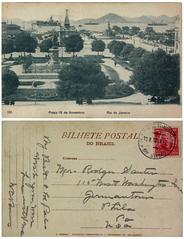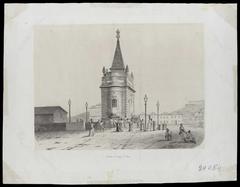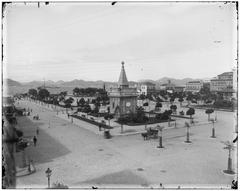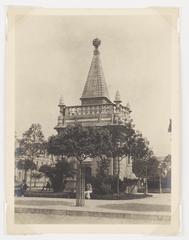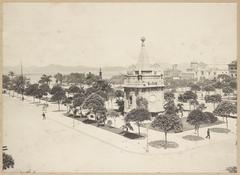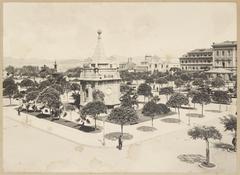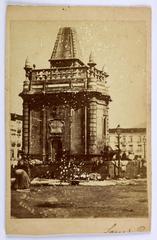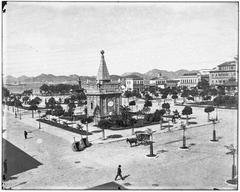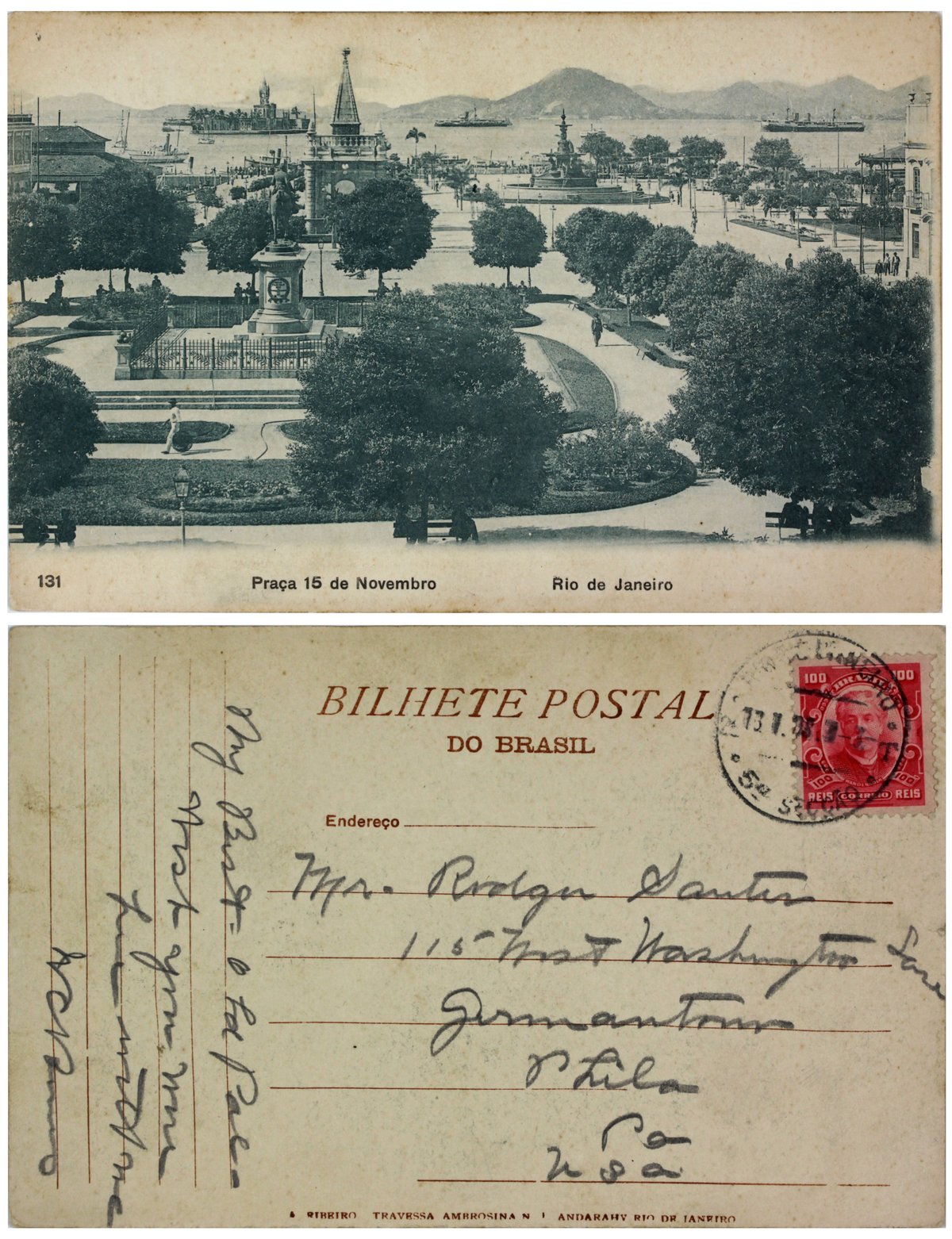
Chafariz do Mestre Valentim: Visiting Hours, Tickets & Historical Guide – Rio de Janeiro
Date: 14/06/2025
Introduction
The Chafariz do Mestre Valentim, also known as the Fountain of Mestre Valentim or Chafariz da Pirâmide, is one of Rio de Janeiro’s most iconic and historically significant monuments. Commissioned in the late 18th century, the fountain not only addressed the urgent need for potable water in a rapidly growing city, but also became a symbol of artistic innovation and multicultural heritage. Designed by the renowned Afro-Brazilian artist and architect Valentim da Fonseca e Silva—widely known as Mestre Valentim—the fountain blends neoclassical, Rococo, and Baroque influences with indigenous Brazilian motifs, reflecting both the city’s colonial aspirations and its evolving cultural identity (Wikipedia: Mestre Valentim; Museu do Rio).
Strategically located in Praça XV de Novembro, a historic nucleus of political and social activity, the Chafariz do Mestre Valentim served the community both as a source of clean water and as a vibrant gathering place. Its preservation as a national heritage site ensures that visitors today can experience a unique blend of art, history, and urban life at the heart of Rio de Janeiro. This comprehensive guide provides up-to-date information on the fountain’s history, design, cultural importance, visiting hours, accessibility, and tips for making the most of your visit.
Table of Contents
- Introduction
- Historical Background and Commissioning
- Architectural and Artistic Features
- Mestre Valentim: The Artist Behind the Fountain
- Social and Cultural Significance
- Visiting the Chafariz do Mestre Valentim
- Nearby Attractions and Activities
- Preservation and Heritage Status
- Visitor Tips
- Frequently Asked Questions (FAQ)
- Summary and How to Stay Updated
- References
Historical Background and Commissioning
The Chafariz do Mestre Valentim was commissioned in 1779 under the administration of Viceroy Dom Luís de Vasconcelos e Souza, during a period of major urban renewal in Rio de Janeiro (Monumentos Rio). The city’s population boom and the lack of an adequate water distribution system made public fountains essential. Mestre Valentim, celebrated for his fusion of European styles and local Brazilian themes, was chosen to design and construct the fountain, which was completed and inaugurated in 1789. The location, Praça XV de Novembro, was then known as Largo do Paço and served as a vital political and economic center (Museu do Rio).
The fountain replaced an earlier 1747 structure by engineer José Fernandes Pinto Alpoim and was supplied by water from the Aqueduto da Carioca (now Arcos da Lapa), which distributed water to the port and city center (Rio Memórias).
Architectural and Artistic Features
The Chafariz do Mestre Valentim is a masterful example of 18th-century public art, constructed from granite and lioz limestone imported from Portugal. The structure stands approximately 5 meters tall and 20 meters wide, featuring a central pyramid (obelisque), originally topped with the Portuguese royal arms and later replaced by a bronze armillary sphere and imperial crown in 1842 (Viajando pela História do Rio de Janeiro).
Four sides of the fountain each present a central window with a large stone basin beneath, designed to collect water. The side facing the sea bears a commemorative plaque, while the rear features an oval marble medallion. Artistic highlights include:
- Allegorical figures representing Abundance and Commerce, reflecting the city’s economic ambitions (Museu Histórico Nacional)
- Water spouts sculpted as dolphins and shells, symbolizing maritime prosperity and Rio’s coastal identity
- Reliefs and ornamental details that harmonize Baroque, Rococo, and Neoclassical elements
- Integration of Brazilian flora and fauna, a signature of Mestre Valentim’s work (Smarthistory)
Mestre Valentim: The Artist Behind the Fountain
Mestre Valentim da Fonseca e Silva (1745–1813) was a free man of African and Portuguese descent and one of the most influential artists of colonial Brazil. His rise in a racially stratified society was exceptional, and his portfolio includes not only the Chafariz do Mestre Valentim but also the Passeio Público, Brazil’s first public park (Wikipedia: Mestre Valentim). His work is characterized by the innovative synthesis of European artistic traditions and local Brazilian identity, inspiring future generations of artists and architects (Museu do Negro).
Social and Cultural Significance
Throughout the 18th and 19th centuries, the fountain was a bustling hub where people from all walks of life—enslaved Africans, merchants, sailors, soldiers, and government officials—converged to collect water, exchange news, and do business (Rio Memórias). The Chafariz also played a backdrop to political events and clandestine meetings, such as those related to the Conjuração Carioca independence movement.
As a site designed and executed by a prominent Afro-Brazilian artist, the fountain has become an enduring symbol of Afro-Brazilian achievement and multicultural resilience in colonial society (Museu do Negro).
Visiting the Chafariz do Mestre Valentim
Visiting Hours
The Chafariz do Mestre Valentim is an open-air monument located in Praça XV de Novembro and is accessible 24 hours a day, seven days a week. There are no restricted visiting hours, allowing flexibility for all visitors (Guia do Andarilho Urbano; Visit Rio).
Tickets and Admission
There is no entrance fee or ticket required to visit the fountain. Access is completely free.
Accessibility
The monument and surrounding square are generally accessible to visitors with mobility challenges, thanks to paved walkways and ramps. However, some uneven cobblestones may require extra caution for wheelchair users (Museu do Rio).
Getting There
Address: Praça XV de Novembro, Centro, Rio de Janeiro.
- Metro: Take Metro Line 1 to ‘Cinelândia’ and walk toward Largo do Paço.
- VLT (Light Rail): Stops near Praça XV.
- Bus: Multiple lines serve the Centro district.
- On Foot: The area is pedestrian-friendly and close to many other attractions.
Nearby Attractions and Activities
Enhance your visit by exploring these nearby sites:
- Paço Imperial: The former royal residence now hosts art exhibitions and cultural events.
- Theatro Municipal: A celebrated early 20th-century theater within walking distance.
- Museu Histórico Nacional: Offers extensive exhibits on Brazilian history.
- Barcas Terminal: Take a ferry to Niterói or Ilha de Paquetá.
Cafés and shops around the square provide refreshments and local crafts. Guided walking tours covering Rio’s colonial history often include the Chafariz as a highlight (Viajando pela História do Rio de Janeiro).
Preservation and Heritage Status
The Chafariz do Mestre Valentim was officially listed as a national historic monument by IPHAN in 1938, ensuring its preservation for future generations (IPHAN). Ongoing restoration efforts address the effects of pollution and urban development, with educational programs raising awareness of its importance. The fountain’s artistic and historical value is now recognized globally, and it remains a focal point for cultural events and heritage walks in Rio (IPatrimônio).
Visitor Tips
- Best Time to Visit: Early mornings or late afternoons offer the best light for photography and fewer crowds.
- Safety: Keep personal belongings secure, especially during busy periods.
- Comfort: Wear comfortable shoes and bring water, as you’ll likely explore other historic sites nearby.
- Weather: Rio’s wet season is from December to March; plan accordingly.
- Guided Tours: Join a walking tour of the Centro district for a deeper historical context.
Frequently Asked Questions (FAQ)
Q: What are the visiting hours of Chafariz do Mestre Valentim?
A: The fountain is accessible 24/7 as it is located in an open public square.
Q: Is there an entrance fee or ticket required?
A: No, visiting the Chafariz do Mestre Valentim is free.
Q: Are guided tours available?
A: While there are no official tours solely for the fountain, many walking tours of downtown Rio include it as a key stop.
Q: Is the site accessible for people with disabilities?
A: The area is mostly accessible, though some cobblestones may pose minor challenges.
Q: What other historical sites are nearby?
A: Paço Imperial, Theatro Municipal, Museu Histórico Nacional, and the Barcas Terminal are all within walking distance.
Summary and How to Stay Updated
The Chafariz do Mestre Valentim endures as a vibrant symbol of Rio de Janeiro’s colonial past, artistic innovation, and cultural diversity. Freely accessible 24 hours a day in the heart of the city’s historic district, it invites visitors to experience the unique blend of history, architecture, and social life that defines Rio. Ongoing preservation by IPHAN and regular cultural events ensure that the fountain remains a living monument for future generations (Museu do Rio; Visit Rio).
For the latest visitor information, event updates, and guided tour schedules, consult official websites such as IPHAN, Museu do Rio, and Visit Rio. You can also download the Audiala app for curated cultural guides and offline access to historical sites across Rio.
References
- Wikipedia: Mestre Valentim
- Museu do Rio
- Museu do Negro
- Guia do Andarilho Urbano
- Instituto do Patrimônio Histórico e Artístico Nacional (IPHAN)
- Monumentos Rio
- Smarthistory
- Museu Histórico Nacional
- Visit Rio
- Viajando pela História do Rio de Janeiro
- Rio Memórias
- IPatrimônio
For more travel tips, historical guides, and offline access to Rio de Janeiro’s cultural landmarks, download the Audiala app. Follow us on social media for the latest updates and insights.
